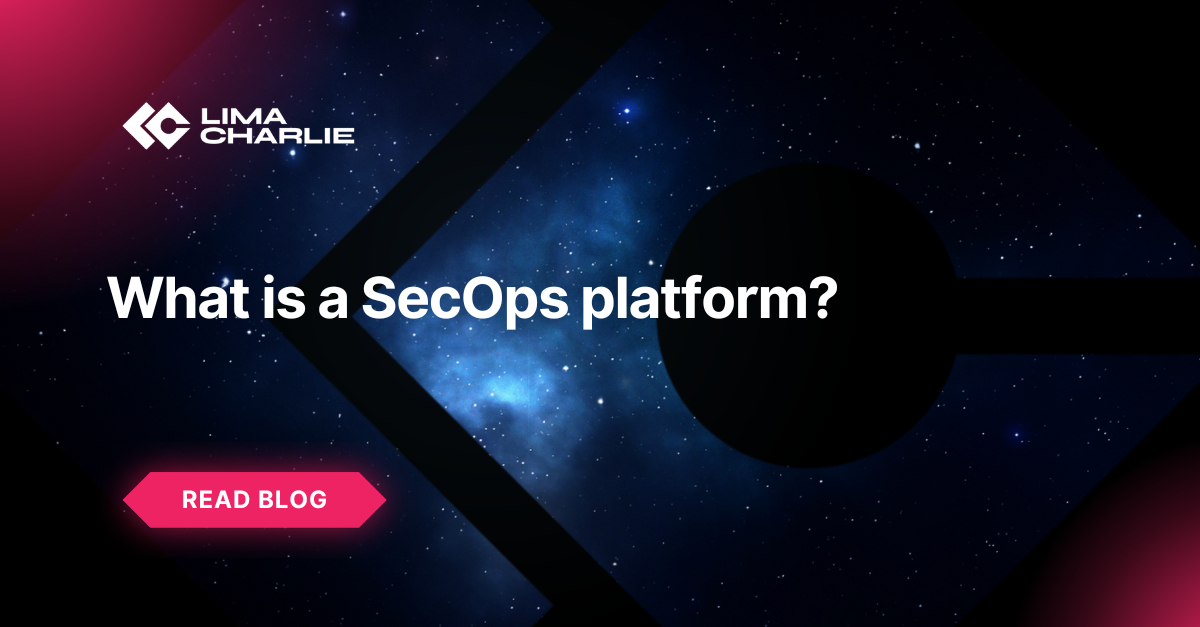What is a SecOps platform?

Sr. Technical Content Strategist

Vendors increasingly claim to offer SecOps platforms. Yet, their solutions are so different from each other that buyers find themselves wondering what the term “SecOps platform” even means. We’d like to give a straightforward answer to that question.
Toward a working definition of SecOps platforms
It’s tough to define a term when everyone seems to mean something different by it. In such cases, the best way forward is often to look at the word itself.
If nothing else, a SecOps platform must:
Enable SecOps
Be a platform
Yes, that sounds like a tautology. However, considering that many solutions promote themselves as “SecOps platforms” while falling short of these basic requirements, it’s a helpful starting point.
Let’s look at both parts of our provisional definition more closely:
SecOps platforms enable SecOps (in the true sense of the term)
Despite how some vendors use the term, “SecOps” cannot be understood as “anything I do related to security.” If that’s all it means, it has no meaning at all. Instead, SecOps must be taken as a deliberate echo of “DevOps.”
SecOps, therefore, refers to cybersecurity operations that employ DevOps principles and methodologies (i.e., with an emphasis on scalable operations, efficiency, breaking down siloes between teams, control and visibility, and so on).
So, what does it mean in practical terms to say that a cybersecurity platform enables SecOps? To earn the name SecOps, a platform must be:
Engineering-focused: A SecOps platform supports an engineering approach to cybersecurity, offering customization, flexibility, and control to security teams. Basic DevOps practices like infrastructure as code (IaC) must be available.
Scalable: SecOps platforms need to support scalable security operations through extensive automation capabilities and multi-tenancy. Manual controls and workflows must be kept to a minimum (this is SecOps, after all, not ClickOps!).
Open: SecOps platforms should be transparent. There’s no room here for black-box solutions. In order to practice SecOps, teams need to understand how the tools in their environment work. Visibility is non-negotiable, and API-first access is table stakes.
SecOps platforms are genuine platforms
Similarly, it’s not enough for a solution to call itself a platform—it has to actually be one. To be a true platform, it requires:
Integration: Platform capabilities are well-integrated and work together seamlessly. Teams can configure different tools within the platform using a common language, manage telemetry in a common data format, and control everything via a unified interface.
Quality: Individual platform capabilities are on par with what a practitioner could expect using a dedicated point solution. Not every solution in the platform must be “best in class” (a dubious notion in any case), but platform tools should be well-engineered and help teams meet operational goals.
Extensible: Security operations are hard, and no tool can solve all problems for all teams. A SecOps platform, then, must be able to integrate easily with third-party solutions. Real platforms make it easy to bring in telemetry data from other sources, output data to any destination, and automate actions across tools outside of the platform.
The definition of a SecOps Platform, then, is:
An integrated cybersecurity solution that offers core, enterprise-grade security tools to enable SecOps via API-first access, automation, IaC, and multi-tenancy.
What is NOT a SecOps Platform?
As stated at the outset, an increasing number of solutions claim to be SecOps platforms while failing to meet the most basic requirements. Telltale signs that a solution is not a true SecOps platform include:
Poor integration: Different modules don’t work together well, or multiple UIs are required to use the solution effectively. This often happens when a so-called “platform” is really just a bundle of acquired point solutions.
Low visibility: Security teams are told to take on faith that their tool is doing what the vendor has promised, or are asked to pay for API access.
Manual controls: Instead of enabling engineering-forward cybersecurity, tools require a “point and click” approach to configuration and day-to-day operations.
Difficulty working off-platform: The solution is hard to integrate with third-party tools. This often happens when a “platform” attempts to be an all-in-one solution (“the only cybersecurity product you’ll ever need”).
The LimaCharlie SecOps Cloud Platform
The LimaCharlie SecOps Cloud Platform (SCP) is a true platform for SecOps—and the only one with a public cloud-like delivery model.
We believe that SecOps teams deserve the same degree of flexibility and control that their colleagues in IT have gained thanks to public cloud providers like AWS and GCP. For this reason, everything in the SCP is available on-demand, pay-per-use, and API-first, without the mandatory minimums, inflexible contracts, and closed technologies found at other security vendors.
The SecOps Cloud Platform is the only fully open SecOps platform on the market. Try it for free or book a demo today.